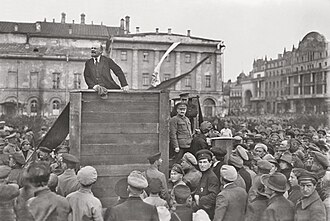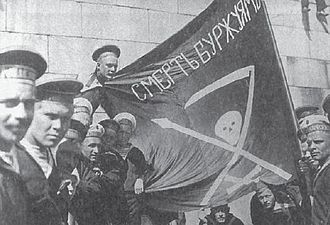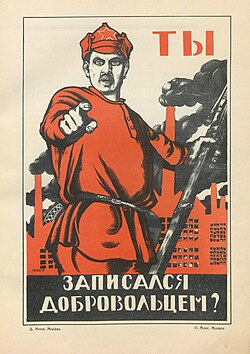The Bolsheviks were a prominent political faction in early 20th-century Russia, led by Vladimir Lenin, that played a pivotal role in the Russian Revolution of 1917. The term 'Bolsheviks' came into use after the Second Congress of the Russian Social Democratic Labour Party, where a group that won the majority of seats in the party's Central Committee elections became known as such. The Bolsheviks aimed to create a party of professional revolutionaries, while the Mensheviks were concerned about the criminalization of the party and leaned towards legitimate methods of fighting autocracy (reformism). While remaining grounded in Marxism, Bolshevism also absorbed elements of leftist radical movements like populism and anarchism.
Research your ancestors on MyHeritage
Origins of the BolsheviksOrigins of the Bolsheviks
The Bolsheviks originated from the Russian Social Democratic Labor Party (RSDLP), a Marxist political party founded in 1898. In 1903, a split occurred within the RSDLP, leading to the formation of two major factions: the Bolsheviks, meaning "majority" in Russian, and the Mensheviks, meaning "minority." The split was primarily over differences in party membership and ideology.
Ideology of the BolsheviksIdeology of the Bolsheviks

The Bolsheviks, under the leadership of Vladimir Lenin, adhered to a more radical and centralized ideology compared to the Mensheviks. They advocated for a vanguard party composed of professional revolutionaries who would lead the working class in a violent overthrow of the capitalist system. The Bolsheviks believed in a dictatorship of the proletariat, with the aim of establishing a socialist state on the path to communism. The Mensheviks believed that the revolutionary proletariat should act in a coalition with the liberal bourgeoisie against autocracy. In the eyes of the Bolsheviks, the proletariat was the force capable of achieving the complete overthrow of autocracy, and they considered armed proletarian uprising as the only means to attain such a government. The Mensheviks were willing to settle for the best possible outcome of a regular bourgeois republic, while the Bolsheviks advocated for the slogan of the 'democratic dictatorship of the proletariat and peasantry.'
Th Bolshevik primary methods of revolutionary struggle involved terrorist acts and robberies. In February 1917, the party had approximately 25,000 members. By the period leading up to October of the same year, their membership had grown to approximately 300,000.
Role of the Bolsheviks in the Russian RevolutionRole of the Bolsheviks in the Russian Revolution

The Bolsheviks played a central role in the two stages of the Russian Revolution of 1917. In February 1917, they initially supported the more moderate Provisional Government that emerged after the abdication of Tsar Nicholas II. However, they soon withdrew their support and called for "All Power to the Soviets," demanding a transfer of authority from the Provisional Government to the local councils (soviets) dominated by the Bolsheviks.
In October 1917 (Julian calendar, or November in the Gregorian calendar), the Bolsheviks, led by Lenin, seized power in the October Revolution, overthrowing the Provisional Government. This event marked the beginning of Bolshevik rule in Russia.
Rule of the Bolsheviks and the Russian Civil WarRule of the Bolsheviks and the Russian Civil War

Following their rise to power, the Bolsheviks established a socialist government and began implementing their policies, including land redistribution and the withdrawal from World War I. Before the Great October Socialist Revolution, the Bolsheviks advocated for 'All Power to the Soviets!' However, after October 25, 1917, power came into the hands of the Bolshevik government – the Council of People's Commissars (Sovnarkom) led by Lenin. Some argue that this marked a transition from people's power represented by the Soviets to the power of party committees, which were not accountable to the broader masses of the working population. However, their rule faced opposition from various factions, leading to the outbreak of the Russian Civil War (1917-1923). During this conflict, the Bolshevik Red Army fought against a coalition of White Army forces, foreign intervention, and various regional and political groups. All opponents of the Bolsheviks within the former Russian Empire suffered defeat (with exceptions such as Finland, Poland, and the Baltic States, which gained independence). The RCP(b) became the only legal party in the country.
The Bolsheviks and their impact in World HistoryThe Bolsheviks and their impact in World History
In 1922, the Bolshevik-controlled territories of Russia were consolidated into the Union of Soviet Socialist Republics (USSR), a federation of socialist republics, with the RSFSR (Russian Soviet Federative Socialist Republic) as its core. The Bolsheviks, by then known as the Communist Party of the Soviet Union (CPSU), played a leading role in the new state. The Bolshevik Revolution and the subsequent establishment of the Soviet Union had a profound impact on world history, giving rise to one of the two superpowers in the Cold War era and influenced the spread of communist ideology worldwide. The Bolsheviks' success in Russia inspired revolutionary movements in other countries and led to significant geopolitical changes throughout the 20th century.

